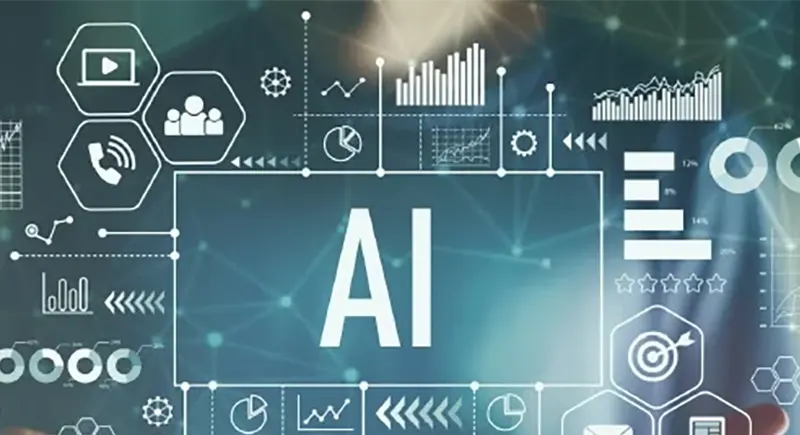In today’s highly competitive digital world, crafting compelling ad copy is more crucial than ever. With attention spans dwindling and user expectations growing, marketers need to deliver high-performing copy that resonates with the audience instantly. This is where artificial intelligence (AI) is making waves. From content analysis to tone optimization and headline generation, AI tools are now capable of creating powerful, persuasive ads in a matter of seconds. These advancements are a key reason why modern Digital Marketing Courses in Pune now include modules on AI-driven copywriting.
AI in advertising doesn’t just save time—it brings data-backed precision to every word, ensuring better engagement, click-through rates (CTR), and conversions. In this article, we’ll explore how AI is revolutionizing ad copy creation, top tools in the market, strategies for implementation, and how businesses and professionals can leverage this technology effectively.
The Role of AI in Ad Copywriting
Traditionally, writing ad copy has been a manual and creative task. While creativity still holds immense value, AI brings in efficiency, consistency, and performance-driven insights.
Here’s what AI brings to the table:
- Data Analysis: AI tools analyze historical performance data to understand what works best.
- Audience Targeting: AI helps tailor ad copy based on audience behavior and demographics.
- Language Optimization: Using natural language processing (NLP), AI refines tone, grammar, and phrasing.
- A/B Testing: AI can auto-generate multiple ad variations and test them in real time.
- Predictive Performance: Some tools even predict which copy will perform better based on past metrics.
Key Benefits of Using AI for Ad Copy
1. Saves Time and Resources
AI significantly reduces the time spent brainstorming and writing copy. What used to take hours can now be done in minutes with high accuracy.
2. Consistency Across Campaigns
AI ensures that your brand voice remains consistent across platforms—whether it’s Google Ads, Facebook, or LinkedIn.
3. Enhanced Personalization
AI tools analyze user data to generate personalized ad messages that speak directly to the target audience.
4. Data-Backed Decisions
Unlike human copywriters who might rely on intuition, AI uses data to create copy that is statistically more likely to perform well.
5. Scalability
Need 50 versions of an ad headline for different audiences? AI can do that in seconds, allowing brands to scale campaigns effortlessly.
Top AI Tools for Ad Copy Creation
Several AI-powered platforms have emerged as frontrunners in automated ad copy generation. Here are a few of the most trusted tools in the market:
1. ChatGPT (OpenAI)
OpenAI’s ChatGPT can generate ad copy for multiple formats including search ads, social media posts, and email headers. Its flexibility and creativity make it ideal for marketers.
2. Jasper (formerly Jarvis)
Specially designed for marketing copy, Jasper can produce Google Ads, Facebook headlines, product descriptions, and more with high conversion potential.
3. Copy.ai
This tool specializes in generating short-form content like ad headlines, slogans, and social media captions, using templates trained on high-performing copy.
4. Writesonic
Writesonic allows marketers to generate AI-powered ads tailored to platforms like Google and Facebook. It includes tone selection and audience targeting options.
5. Persado
Persado uses machine learning and emotional data to create compelling, emotionally intelligent ad copy. It’s used by enterprise brands for performance marketing.
How to Use AI to Create Winning Ad Copy
Using AI effectively isn’t just about generating text—it’s about strategy, testing, and refinement. Here’s a step-by-step guide to making the most of AI in your ad campaigns:
Step 1: Define Your Campaign Goal
AI tools work best when you provide clarity. Are you trying to:
- Drive website traffic?
- Generate leads?
- Increase app installs?
- Promote a limited-time offer?
Clear objectives guide the AI to generate purpose-driven copy.
Step 2: Identify Your Target Audience
Input demographic, behavioral, and psychographic data into the tool if possible. The more information you give, the more tailored the output.
Step 3: Select the Right Tool
Choose a tool based on your campaign type:
- For Facebook Ads: Copy.ai, Jasper
- For Google Ads: Writesonic, ChatGPT
- For emotional tone: Persado
Step 4: Input Keywords and Brand Tone
Add your focus keywords, brand name, and select your preferred tone—professional, friendly, witty, urgent, etc. Some tools even allow custom tone training.
Step 5: Generate Multiple Variants
Let the AI create multiple versions. Most platforms will offer 5–20 suggestions for headlines and descriptions.
Step 6: A/B Test Your Ads
Test 2–3 top-performing variations in real campaigns. Monitor performance metrics like CTR, engagement, and conversions.
Step 7: Refine Based on Performance
Use the insights from real-time data to iterate and optimize your copy further.
Examples of AI-Generated Ad Copy
Here are some real-world-style examples created using AI:
Product: Online Yoga Course
Headline: “Start Your Morning with a 15-Min Yoga Routine – Free Trial!”
Description: “Boost your flexibility and energy with our beginner-friendly sessions. Join over 10,000 happy yogis today.”
Service: Digital Marketing Agency
Headline: “Grow Your Business with Proven Ad Strategies”
Description: “Target. Convert. Repeat. Let our experts boost your ROI with data-driven campaigns. Book a free consultation.”
App: Budget Tracker App
Headline: “Control Your Finances Like a Pro – Download Now”
Description: “Track spending, set goals, and save more every month. Get the smartest budgeting app today!”
Each of these examples uses urgency, benefits, and calls-to-action—core elements that AI tools are trained to optimize.
Tips to Maximize AI Efficiency in Copywriting
- Feed Quality Data: Garbage in, garbage out. The quality of input (keywords, tone, goals) directly impacts the AI’s output.
- Review Before Publishing: AI copy is a draft. Human eyes are still essential for nuance, brand voice, and final edits.
- Understand the Algorithms: Learn how your chosen AI tool selects and scores copy. This helps align your goals with its capabilities.
- Stay Compliant: Ensure AI-generated content complies with advertising policies on platforms like Google and Meta.
AI vs. Human Copywriters: The Ideal Combo
AI can generate ad copy fast, but human creativity adds empathy, humor, and cultural context. The best campaigns combine both. Think of AI as your junior copywriter—it’s fast and tireless but still needs guidance from a senior (you!).
Use AI to:
- Get unstuck during brainstorming
- Test multiple headline variations quickly
- Speed up repetitive tasks
Use humans to:
- Build emotional storytelling
- Ensure brand consistency
- Add cultural and linguistic relevance
Future of AI in Ad Copywriting
AI’s capabilities will continue to grow, transforming how brands communicate. Here are some future trends to watch:
- Voice-Ad Copy Generation: With smart speakers growing, AI will generate audio-friendly ad scripts.
- Augmented Reality Ads: AI will help create interactive AR ad copy tailored to user behavior.
- Real-Time Adaptive Copy: Ads that change in real-time based on user behavior or external data (e.g., weather, location).
- Multilingual AI Copywriting: Future tools will offer high-quality, multi-language copy generation with cultural nuance.
Final Thoughts
AI is not a replacement for creativity—it’s a catalyst for it. By using AI tools to streamline ad copy creation, marketers can produce high-performing campaigns at scale, while focusing their energy on strategy, storytelling, and customer relationships.
The integration of AI into advertising is no longer just a trend; it’s a necessity for marketers who want to stay competitive in 2025 and beyond. Whether you’re a business owner, a freelancer, or an aspiring marketer, learning how to leverage AI for ad copy gives you a powerful edge.
If you’re ready to upskill and master these next-gen marketing strategies, consider enrolling in Digital Marketing Courses in Pune. These programs now include training on AI tools, automation, and analytics, preparing you for tomorrow’s marketing landscape.
Moreover, learners who wish to get hands-on practice and job-oriented training can explore options available at a reputed digital marketing institute in Pune, where AI-driven marketing modules are part of the core curriculum.









